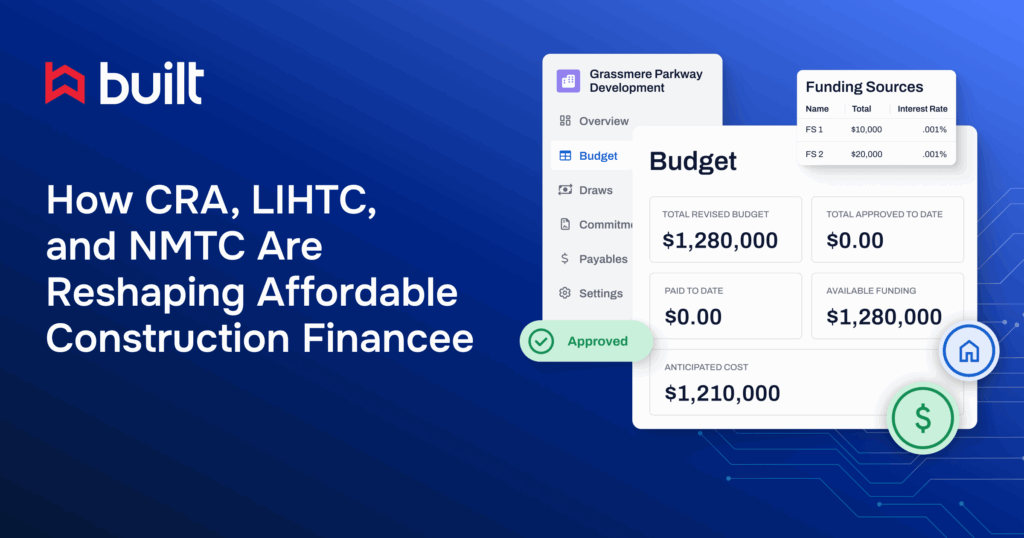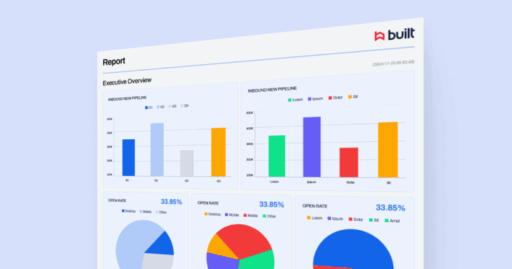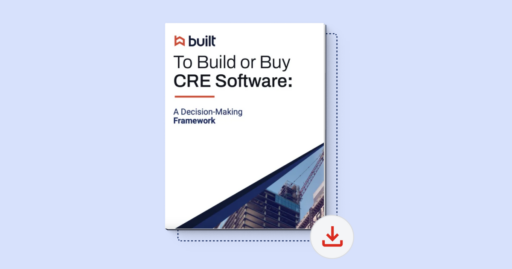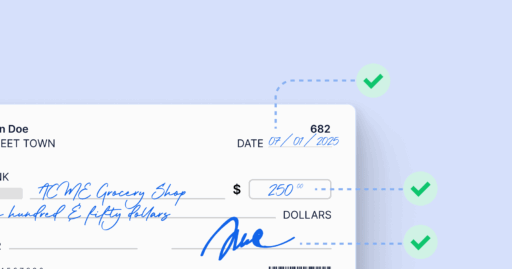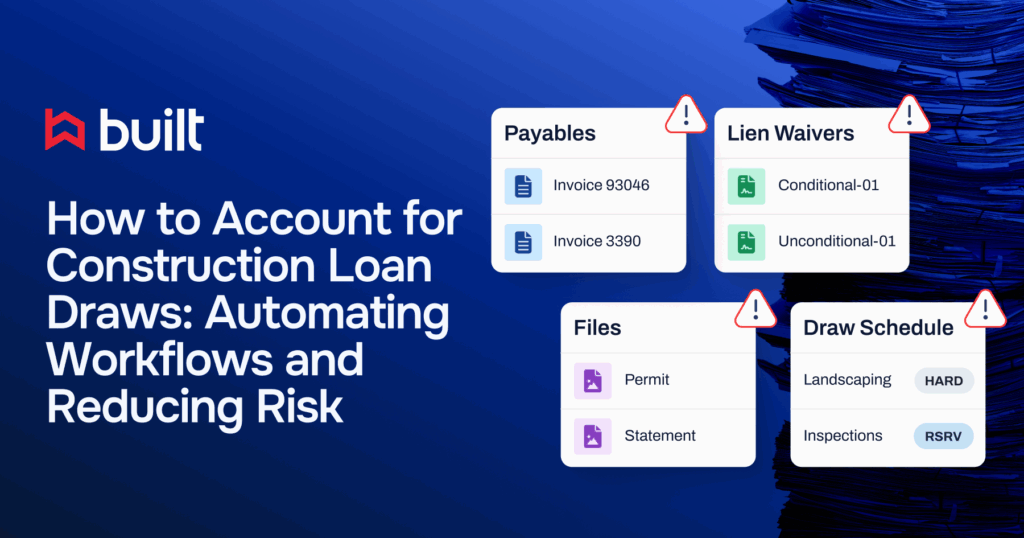
The Real Estate Development Software Built for Construction Capital and Portfolio Control

Clean visibility from pre-close through stabilization is the single greatest hurdle for scaling real estate development.
This lack of integrated clarity captures a common challenge for groups managing active development projects. While most construction project tracking software focuses narrowly on the build phase, owner-developers face visibility gaps spanning the entire lifecycle: from underwriting and funding through active construction, lease-up, and asset stabilization.
Without connected systems, teams fall into manual rework cycles, fractured handoffs, and reactive decisions. Spreadsheets multiply, cost control becomes guesswork, and critical project and financial data gets lost between acquisitions, construction, and asset management.
The result is clear: delayed funding, inaccurate IRR projections, and limited scalability across your development portfolio.
This article unpacks the cost of disconnected project tracking. It shows how real estate development software built for full development lifecycle execution on the capital and compliance side can deliver the clarity, control, and capital efficiency needed to scale with confidence.
The High Cost of Disconnected Lifecycle Tracking
When systems don’t communicate, visibility breaks down. This fundamentally limits your ability to manage cost, pacing, and outcomes across your portfolio.
For owner-developers, fragmented systems introduce blind spots at every stage, making each handoff a source of unnecessary risk:
- Draws stall due to missing documentation or unclear inspection status.
- Budget-to-actual performance becomes difficult to track.
- Timelines and asset projections lose reliability without real-time updates.
Because these gaps go beyond mere operations, they actively restrict your ability to grow and achieve portfolio clarity.
Manual workarounds multiply risk
Without a centralized system, teams fall into reactive patterns. Time is lost stitching together spreadsheets, tracking draw dependencies, and manually managing backups. As your portfolio scales, the administrative drag also scales.
The impacts show up quickly:
- Delayed funding and capital deployment.
- Unnoticed cost overruns that reduce NOI.
- Hours spent chasing status updates from partners.
Every delay has a cost, and when these impacts compound, they quickly erode returns.
The investor impact
Outdated or incomplete data slows execution and erodes trust. Capital gets misallocated, budgets drift, and projections lose accuracy. IRR, NOI, and timelines all depend on precision. Without connected systems, you’re left guessing, and guessing costs money.
A Tipping Point for Real Estate Execution
Deloitte’s 2025 Commercial Real Estate Outlook is clear: 81% of CRE leaders are investing in technology to gain portfolio clarity and control. But simply layering tools onto legacy workflows won’t move the needle. It often introduces more friction and confusion.
For owner-developers balancing multiple projects, investor expectations, and tight return windows, technology must drive outcomes:
- Centralized platforms that eliminate data silos between acquisitions, construction, and asset management
- Real-time access to budget, draw, and pacing metrics to inform investment decisions
- Intuitive tools that reduce administrative overhead, not add to it
Real-Time Project Cost Tracking and Progress Monitoring for Owner-Developers
Owners and developers need sophisticated tools for real-time financial monitoring that flags risk and confirms progress across multiple jobs.
Built delivers the specific, high-fidelity data points required for executive-level oversight and capital efficiency.
Financial continuity: From deal pipeline to project cost
From the moment a deal enters the pipeline, data silos pose a risk. Without a platform that centralizes construction loan budget and cost data, financial projections are immediately compromised.
Built ensures continuity by digitizing the development budget and structuring funding early on. This eliminates the manual rework that causes delays and preserves the integrity of your project cost tracking throughout the loan lifecycle.
What Built tracks, and why it matters:
- Budget and draw control: Compare planned vs. actual costs in real time by draw, phase, or line item. This helps you tighten cost control and eliminate end-of-month surprises.
- Inspection and draw status in real time: Track draw approvals and inspection progress without delay. This surfaces blockers early and keeps capital flowing.
- Interest reserve and capital timing: Monitor reserves and disbursements across your portfolio to time capital calls and avoid interest overspend.
Gaining this deep level of financial insight is the first step toward reducing portfolio risk and accelerating returns.
What owners and developers are telling us
Developers across the industry are saying the same thing: visibility matters—and fragmented tools aren’t enough.
At Copper Builders, the need for intuitive oversight across a growing project list was critical. One leader shared: “I can see all of my jobs really in one snapshot . . . being able to do draw reports and things like that, you don’t even really need to be technologically savvy.”
And for firms juggling multiple internal stakeholders across development, finance, and construction, streamlining updates and task management has a real operational impact. At John Kraemer & Sons, the impact was operational. A shift to unified tracking helped “reduce admin load and improve synchronization across project milestones.”
These aren’t isolated stories. They’re signals of where the construction business is moving. The real estate developers solving lifecycle fragmentation now are the ones positioned to move faster, reduce surprises, and protect outcomes at every stage.
The next evolution is tighter lifecycle alignment. That’s exactly where Built delivers.
Breaking Down Built’s Development Lifecycle Tracking Framework
Owners and developers need continuity, clarity, and control from the moment a deal goes live through to asset stabilization. That’s why Built’s loan lifecycle project tracking is purpose-built to connect every critical phase of development, deal origination, pre-construction, active construction, and closeout within a single, collaborative platform.
Pre-close to close
Teams digitize development budgets, structure funding, and establish a connected baseline that scales seamlessly as projects progress. This eliminates manual data entry and ensures continuity as deals transition from underwriting to execution, without rework or duplication.
Active construction phase
During the active build, core features like draw management, lien waiver tracking, and inspection integrations are centralized within one construction management software platform. Teams no longer need to manage construction projects with multiple tools. They gain real-time visibility into compliance, capital flow, and job site activity in a single system.
Stabilization
As projects near closeout, Built enables milestone tracking, performance pacing, and interest reserve monitoring to help teams stay on track with pro forma targets. Post-close compliance and financial management don’t fall through the cracks, and asset managers and executives get instant access to relevant metrics.
Unified reporting across all phases
From project owners to field teams, every stakeholder benefits from a shared view of performance through tools like the Project Compliance Risk Dashboard and Funding Source Report. These deliver timely, actionable insights for better resource allocation and portfolio performance.
Project outcomes improve from start to finish by connecting every phase, delivering efficiency across the entire lifecycle.
The Results: Time Saved, Risk Reduced, Growth Enabled
When owner-developers gain full lifecycle visibility, they gain the coordination and clarity needed to scale with confidence.
Built helps teams move faster with less friction, reducing manual effort, accelerating decision-making, and improving cost control across active developments.
For organizations overseeing multiple projects, centralized draw management and real-time insights are strategic advantages. And for firms balancing stakeholders across development, finance, and construction, streamlined task management delivers measurable impact.
These aren’t isolated outcomes—they reflect a broader shift. Developers are investing in lifecycle alignment to reduce risk, control capital, and achieve return targets with greater precision.
Whether you’re managing five projects or fifty, Built equips your team to grow without outgrowing your systems. Because when data is delayed, decisions lag. But when visibility is real-time, execution accelerates.
Ready to centralize your portfolio and scale with clarity? Book a demo to see how Built supports smarter execution from pre-close to stabilization.
Construction Project Tracking Software for Developers FAQs
What features should I look for in construction tracking software to improve project visibility?
Look for software that offers role-based dashboards, milestone tracking, real-time notifications, and centralized cost data. These tools help you monitor progress, allocate resources effectively, and stay ahead of potential bottlenecks across your portfolio.
Why is integration important in construction project management software?
Integrated platforms that connect with accounting systems, inspection tools, and document management software eliminate data silos and reduce manual data entry. This streamlines project delivery, enables accurate estimates, and improves collaboration across development, finance, and field teams.
How does real estate development software reduce admin work for owners and developers?
Development lifecycle platforms automate repetitive processes like draw approvals, lien tracking, and invoice routing. This reduces administrative drag, minimizes the need for manual file handling, and lets teams focus on managing risk, cash flow, and financial health.
How can project tracking software help prevent budget overruns?
Software with built-in budget-to-actual tracking flags discrepancies early. Real-time alerts, draw pacing tools, and financial dashboards give project owners the insight needed to monitor cost control, avoid overspending, and protect return targets.
Can construction software improve team collaboration across multiple stakeholders?
Yes. Tools designed for construction project tracking support seamless collaboration across project managers, general contractors, finance teams, and asset managers. Features like task management, client portals, and electronic signature workflows keep everyone aligned—even across complex development projects.

Mark Murphy leads OGC Sales at Built, where he is responsible for accelerating adoption of payments and standalone solutions purpose-built for real estate owners, developers, and general contractors. He brings deep experience across sales, general management, and operations in technology-driven businesses.
Prior to joining Built, Mark served as General Manager at Apex Service Partners and Operating Executive at Alpine Investors. He also spent over six years at Flexport, where he held multiple leadership roles including General Manager for the South and Northeast regions, and Director & Acting General Manager for San Francisco and Northern California. Earlier in his career, Mark was Chief Operating Officer at Oolong, an INC 500-recognized international trading business.
Mark holds a degree in Mechanical Engineering from Stanford University, where he captained the Varsity Men’s Rowing team.
Related Posts

The 4 Best Construction Draw Management Software for Owners and Developers (2025 Review)
